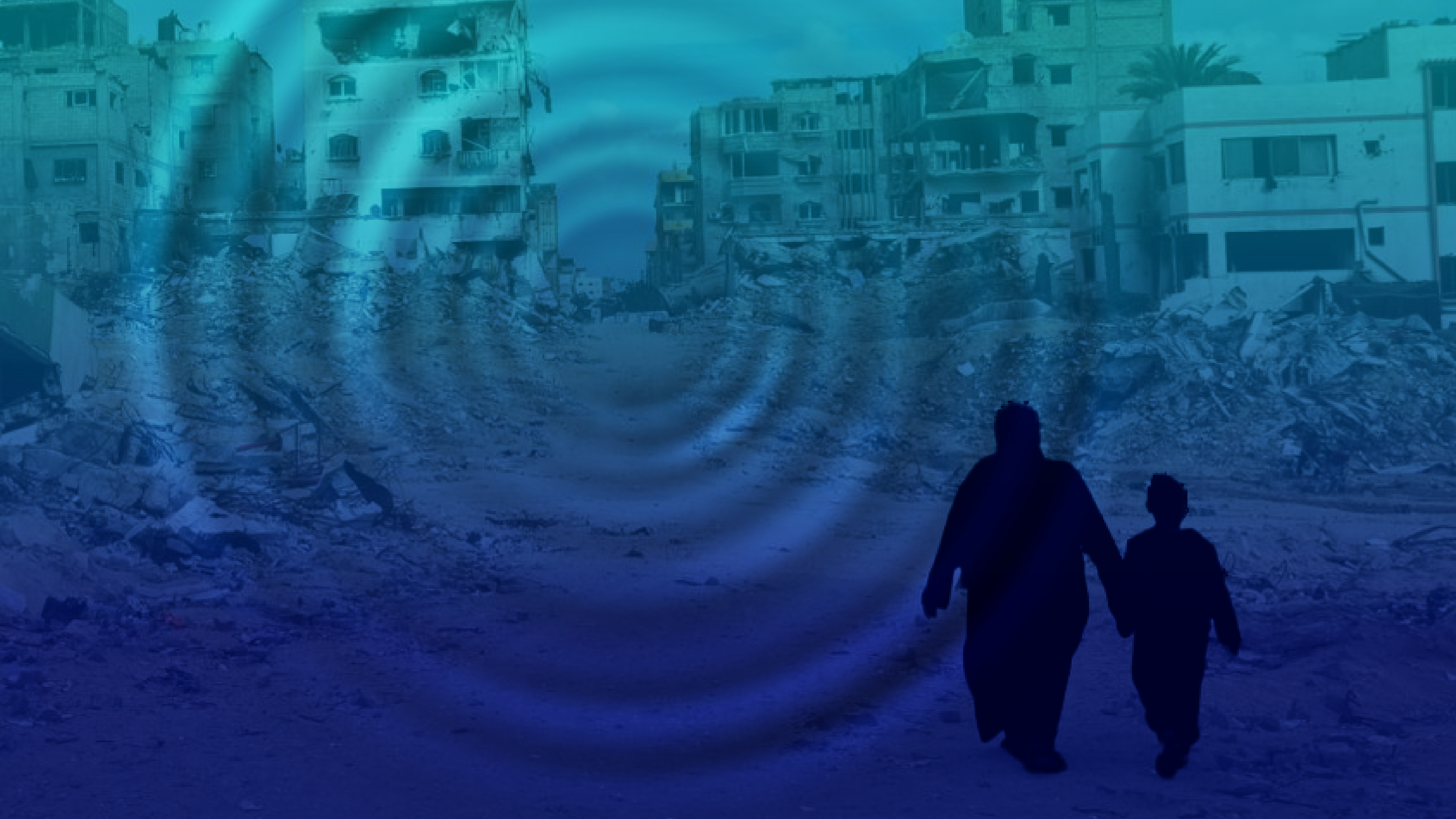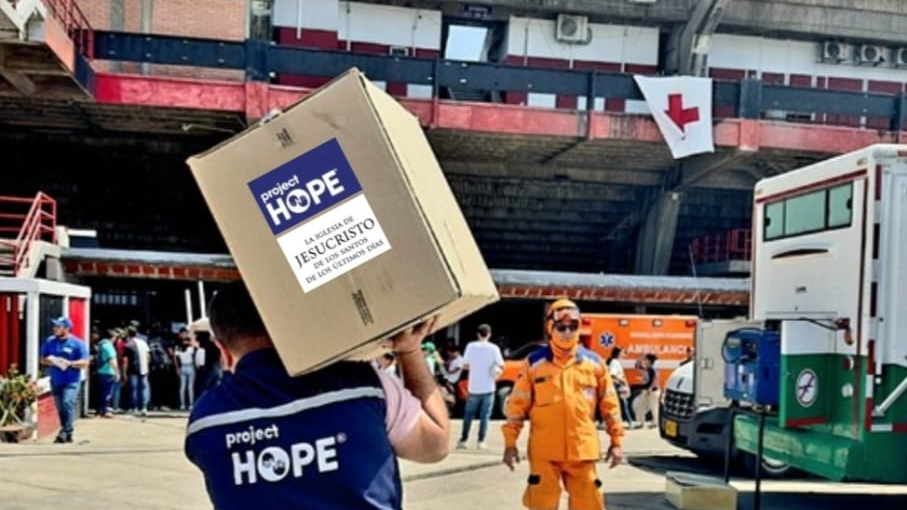What is Famine?
Gaza, Haiti, and Sudan are on the brink of famine, putting millions of people at risk of starvation. What is famine? When is it declared? And what is Project HOPE doing to help? Here’s what you need to know.
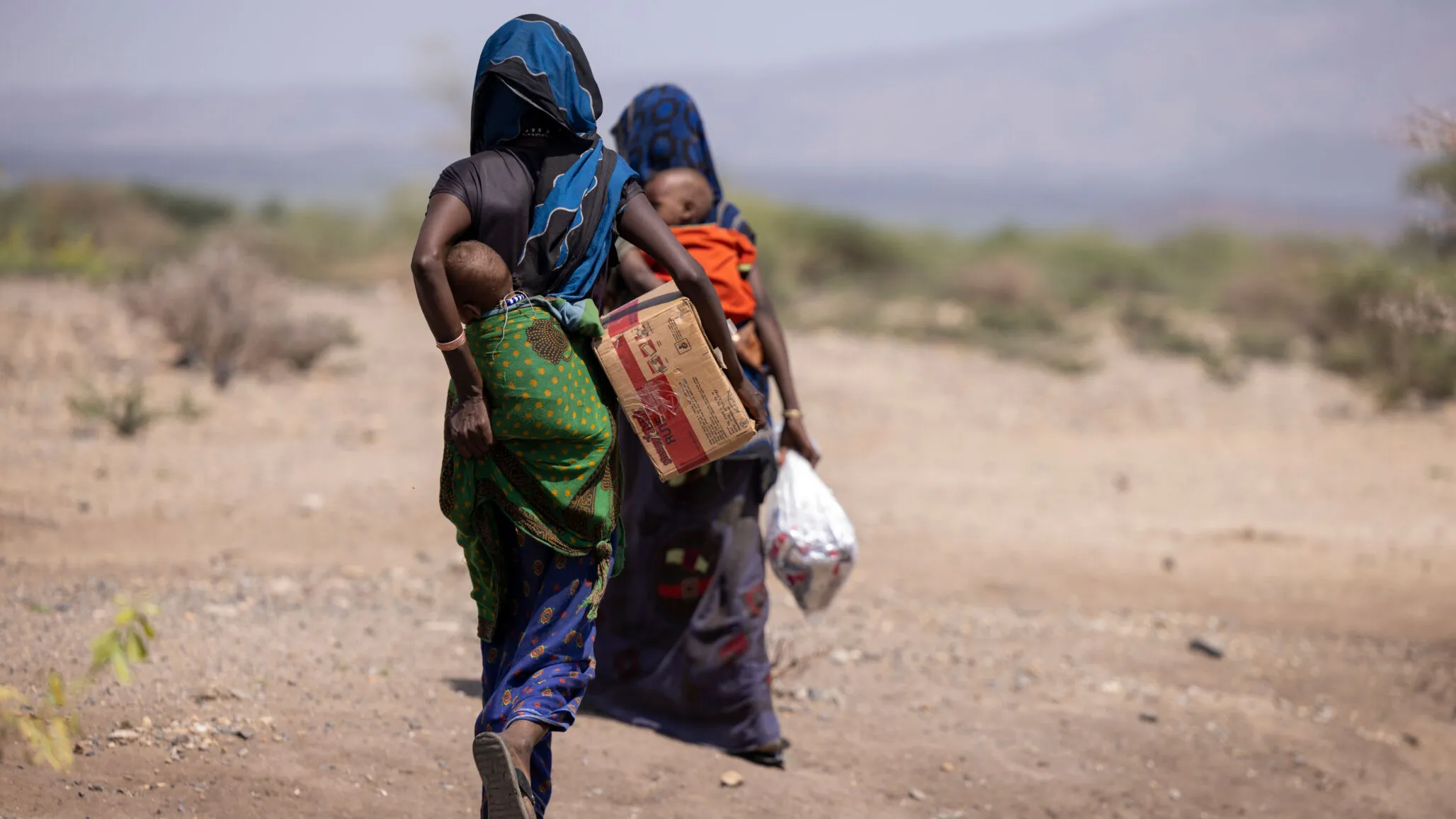
The number of people facing acute food insecurity around the world continues to rise, propelled by conflict, economic shocks, and climate change.
Nearly 180 million people are currently facing crisis hunger levels or worse, more than the 10 most populous U.S. states combined. This includes 1.2 million people who are experiencing famine-like conditions, a number equal to the entire population of Dallas, while famine is fast approaching in places including Gaza, Haiti, and Sudan.
Read on to learn more about what famine looks like, how it’s caused, and how we’re responding at Project HOPE.
What is the definition of famine?
Famine conditions are determined by the Integrated Food Security Phase Classification (IPC) system, a five-tier scale to monitor food security around the world that helps governments and humanitarian actors understand levels of hunger and take action.
Famine is the highest phase of the scale, Phase 5, after Phase 4 (“emergency”) and Phase 3 (“crisis”) levels, and is defined by the IPC as an extreme deprivation of food. Famine is declared in an area when at least 20% of households are experiencing an extreme lack of food, over 30% of people are suffering from acute malnutrition, and more than 2 in 10,000 people (or 4 in 10,000 children) are dying every day due to starvation or disease.
Famine and hunger are not one and the same. Hunger is defined as an uncomfortable or painful physical sensation as a result of undernourishment, or the insufficient consumption of dietary energy, for an extended period of time. Famine is the most severe, concentrated, and catastrophic level of hunger, declared when the above criteria have become reality.
To avoid and avert famine, action must be taken before it’s too late. Phases 3 and 4 require urgent action and a multi-sectoral response, because by the time famine is declared, many people are already dying.
A person is considered food insecure when there is a lack of regular access to the amount of safe and nutritious food needed for healthy development and an active lifestyle.
When someone reaches a severely food insecure condition, they have run out of food and gone a day or more without eating.
Malnutrition is a medical condition that occurs when people don’t get the calories needed to grow and function. The deadliest form of malnutrition is severe acute malnutrition, which occurs when children are too thin for their height.
What’s the scale of the global food crisis?
The number of people facing high levels of acute food insecurity has increased the past five years, and it is expected to continue to rise in 2024.
In 2023, over 281 million people across 59 countries faced high levels of acute food insecurity — 24 million more people than 2022 — everywhere from Nicaragua and Colombia to Pakistan and Sri Lanka.
This includes over 700,000 people who experienced famine-like conditions and starvation, death, and destitution: almost twice as many people than in 2022. The vast majority of them were in Gaza, which has experienced a devastating lack of food and humanitarian relief since the onset of the Israel-Hamas war in October 2023.
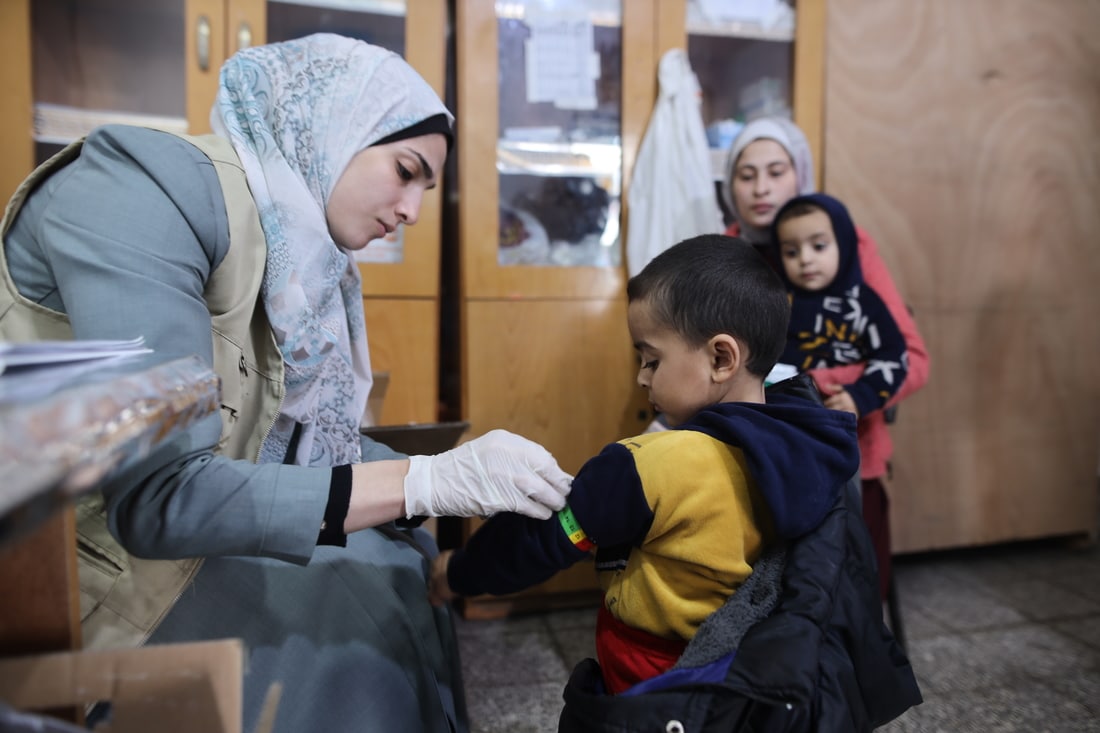
What causes famine?
Conflict is the number-one driver of famine. It displaces families, cripples economies, and damages infrastructure — all of which strain the ability to find and afford food. War and persecution are behind 80% of the worst food crises today, and 60% of the world’s hungriest people live in areas affected by conflict like what we’re seeing in Gaza and Sudan.
Famine is also closely linked to the climate emergency, with shocks and disasters increasingly destroying land and crops, killing off livestock and depleting fisheries, and jeopardizing livelihoods for millions of people around the world.
In places where conflict, economic shocks, and climate change converge, the risk of falling into famine is heightened.

What’s the impact of famine on health?
When famine occurs, starvation isn’t necessarily the biggest cause of death.
Starvation compromises the immune system, rendering individuals more prone to infectious diseases like cholera, malaria, and pneumonia. It also leads to long-term health implications. Less extreme, non-fatal cases of malnutrition can stunt physical and cognitive growth, disrupt education, and impact productivity, limiting the ability to earn more income and achieve greater security. For children who are affected during their first 1,000 days, the health consequences can last a lifetime.
Who is most vulnerable?
Food insecurity has a disproportionate effect on people living in rural areas, people who have been displaced, those with existing health conditions, the elderly, and women and girls.
People living in poverty and already lacking sufficient food are the most vulnerable when famine occurs — particularly women who are pregnant or breastfeeding and children who need adequate nutrition and sustenance to grow.
In emergency situations like Gaza, the youngest children are the first to start dying from malnutrition. Around the world, though mostly in low- and middle-income countries, undernutrition is responsible for almost half of all deaths among children under 5.
“Malnutrition is an inevitable reality in the Gaza Strip. It is evident in a way that cannot be hidden — especially for vulnerable groups such as children, pregnant women, and those with chronic illnesses,” says Dr. Nour Al-Din Khaled Alamassi, a physician for Project HOPE in Gaza. “Inside the camp in Jaafar Al-Tayyar, more than 10,000 IDPs live in tents without money or food, facing the greatest threat — death. It’s even harder for those with chronic illnesses, and sadly they have a choice: treatment or food. These things are becoming normal. We see it every day.”

Which countries are at greatest risk?
Countries suffering through conflict and the intensifying effects of climate change experience recurrent and protracted food crises and are at the greatest risk of famine.
There have been two classified famines in the past 13 years: Somalia in 2011 and South Sudan in 2017. Both events were driven by conflict and unpredictable weather and resulted in extremely critical levels of acute malnutrition and, ultimately, tens of thousands of otherwise preventable deaths.
Today, the Israel-Hamas conflict has created one of the most extreme and unprecedented food crises in history, with residents in Gaza making up 80% of all people facing famine or catastrophic hunger as of January 2024. United Nations officials are declaring “full-blown famine” in northern Gaza, with the entire population facing high levels of acute food insecurity and half of the population experiencing “Catastrophe” (IPC Phase 5). This is the largest share of people facing high levels of acute food insecurity that the IPC has ever classified for any given country or region.
“The numbers are rising,” says Dr. Maram, Project HOPE’s lead physician in Deir al Balah. “Every day we see at least two children with acute malnutrition out of 20 children. For pregnant women, the numbers are also really high — we’ve seen 126 women with acute malnutrition out of 565 pregnant women. And, of course, the situation is even worse in North Gaza.
“They can’t get enough food because the prices are high, for any food you can [find]. Most people cannot afford to buy anything. The people who are internally displaced don’t have jobs.”
Haiti is also on the verge of famine, dueto an escalation in violence and recurrent earthquakes and hurricanes that have pushed Haitians from crisis to catastrophe. Around 1.4 million people in the country are on the verge of famine, and more than 4 million people are struggling to access food.
In Ethiopia, prolonged drought and a two-year civil war have created one of the 10 largest food crises in the world. Some 19.7 million people faced high levels of acute food insecurity in 2023, and households in northern, southern, and southeastern parts of the country are expected face catastrophic levels of hunger in 2024.
The violent civil war in Sudan has pushed more than 20 million people into food insecurity. Food prices in the country are 73% higher than they were last year, and the lean season – the period between harvests when food stocks are at their lowest – is just around the corner.
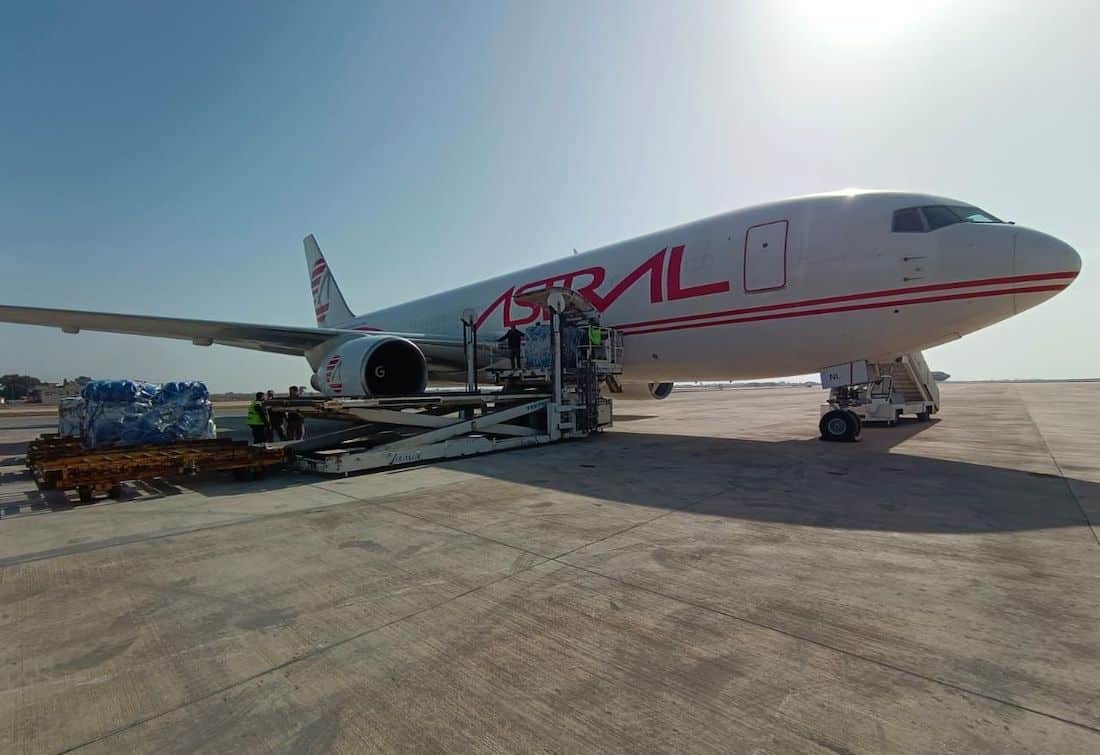
How is Project HOPE responding?
Project HOPE is addressing malnutrition inside our health clinics and supporting health workers on the front lines of some of the world’s most severe food crises. We work closely with local partners to provide immediate relief and build long-term resilience, focusing on reaching women, children, refugees, and other displaced communities.
In Gaza, Project HOPE is providing critical, lifesaving care at our primary health clinics in Deir al Balah and Rafah. Our health workers in Deir al Balah see up to 200 people each day and screen all pregnant women and children under 5 for malnutrition at every consultation.
In Rafah, Project HOPE health workers are providing free care to those in and around an underserved camp housing internally displaced people (IDPs) at our medical tent clinic, in partnership with MedGlobal. We’re also providing mobile medical services to a school serving as an IDP camp. In total, our teams in Rafah have conducted over 3,000 medical consultations in the last few weeks.
In response to the deepening crisis in Haiti, our team is operating mobile medical units (MMUs) to ensure the provision of primary care and psychosocial support services. Through consultations, the team often sees of malnutrition and has procured various anthropometric materials to provide care.
In response to widespread hunger in Ethiopia, we have deployed mobile health and nutrition teams to reach displaced populations and conflict-affected communities, providing ready-to-use therapeutic food (RUTF) and malnutrition support for thousands of women and children. In partnership with the Bill & Melinda Gates Foundation, we will continue to deliver lifesaving nutritional assistance and health care in northern Ethiopia this year.
In response to the dire humanitarian situation in Sudan, Project HOPE helped coordinate the delivery of 24,000 pounds of vital medical supplies, pharmaceuticals, hygiene supplies, and therapeutic food. This aid, worth $13 million, will support more than 100,000 people. We also delivered two Interagency Emergency Health Kits (IEHKs) to Al-Nau Hospital in Omdurman, the only functioning hospital in the city, which served the health needs of a population of 20,000 for three months.


